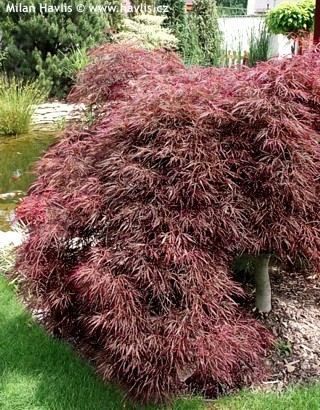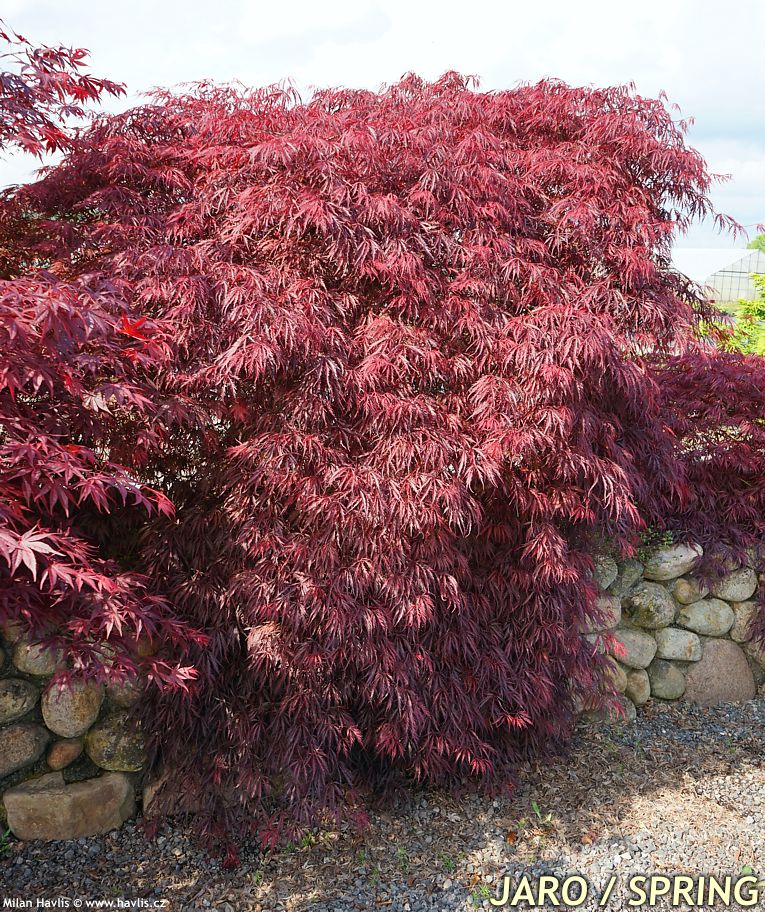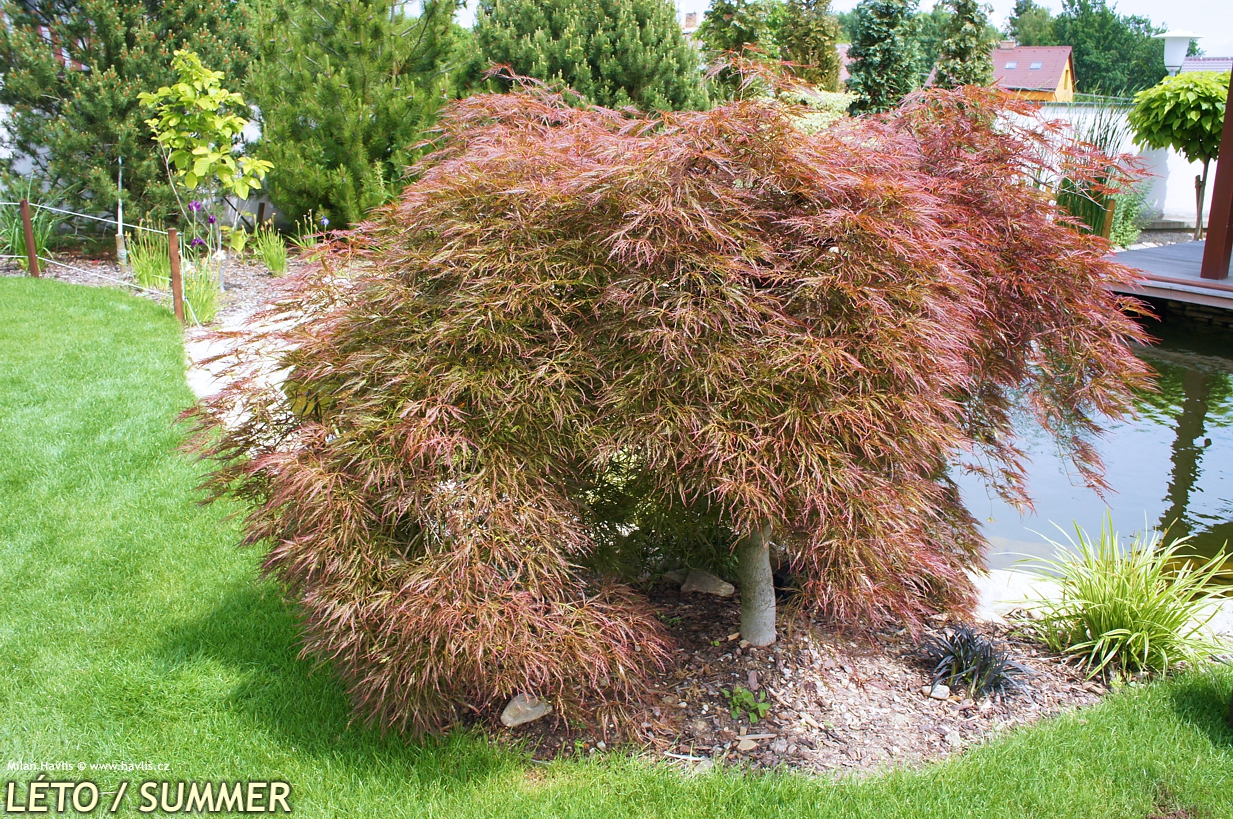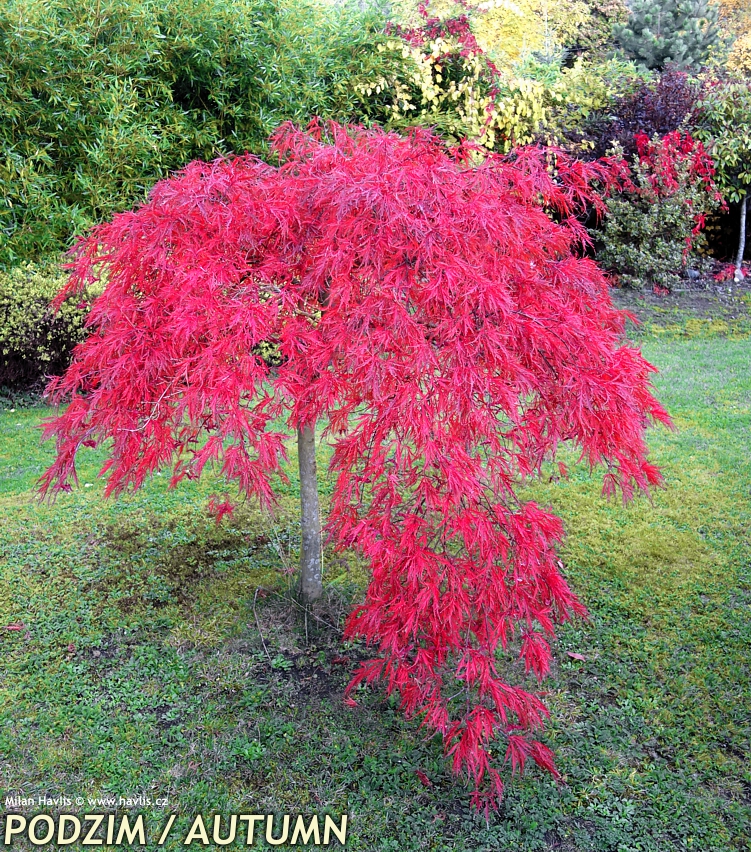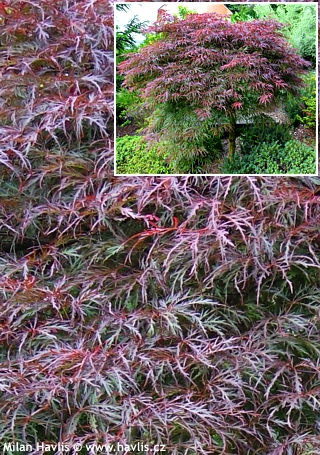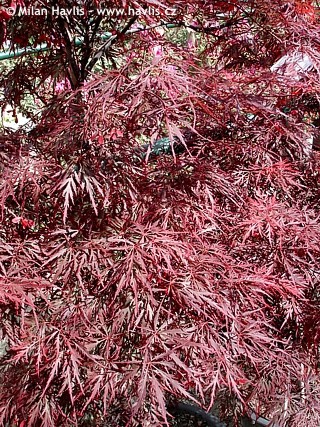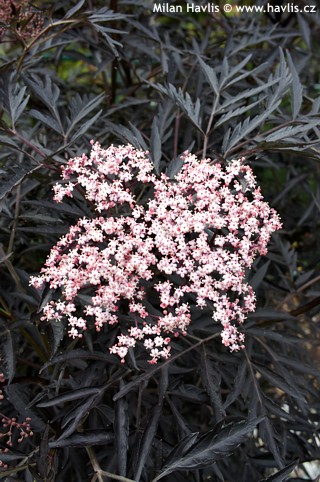Acer palmatum (Dissectum group) 'TAMUKEYAMA' Japanese maple
size/type
medium-sized shrub,medium-sized shrub
usual height
1,5-2m
usual width
1,5-3m
leaves
deciduous broadleaf
colour of leaves
flowers
insignificant or non-blooming
location
full sun
soil type
acidic (peaty)
soil moisture requirements
evenly moist (dislikes drought)
USDA zone (lowest)
5 (down to -29°C)
winter protection
for zone 5+6

for zone 7

categorized
Acer
Japanese maples are very decorative and usually low shrubs, occasionally small trees, with attractive foliage and picturesque structure. There are many varieties in various shades of green, chartreuse, golden and yellow, red to maroon, and even multicoloured (variegated). They originate from Asia (Japan, China, Korea), where they have been cultivated for at least two centuries or perhaps even longer, however, they were introduced to Europe only at the beginning of the 19th century, specifically to Great Britain in 1820. Interestingly, the botanist Carl Peter Thunberg described them much earlier, in 1784, because he undertook an expedition to Japan in 1775-1776, discovering new species and collecting seeds and plants. He named the tree Acer palmatum, referring to the leaf shape resembling a human hand with fingers, although it is said that they first reminded him of frog fingers, which is also one of its oldest Japanese names: kaede. The other is momiji (baby hands). The beauty of the colours and shapes of the leaves and trees is reflected in many arts, for example, in the oldest preserved collection of Japanese poetry from the 8th century, the Man'yōshū (Collection of Ten Thousand Leaves). The Chinese poet Wang Wei (699-759) celebrated their beauty in many of his works, and naturally, maples often appeared in ancient paintings, tapestries, porcelain, and wherever classic and traditional decorations associated with the symbolism of these maples were desired: beauty and elegance, serenity, endurance, vitality, and transformation.Description of the plant:
Tamukeyama is an old variety of Japanese maple. It is mentioned in Japanese literature as early as in 1710. It is one of the most preferred varieties among nurseries around the world thanks to its reliable yearly growths, strong branches and suitability for very hot locations. It can do well even in zone 9. Tamukeyama is a sort of a chameleon. Its finely cut, deciduous leaves emerge bright red, turn burgundy red in May and June, their colour deepens to crimson red with some brown hues in summer and then turn shiny carmine red in autumn while leaves inside the plant turn green. In very hot regions of Southern Europe it tends to change to green completely for the hottest days of summer.
Its shape is quite irregular compared so some other cut-leaf varieties. The branches form cascades and their ends droop filling up the overall structure only with age. You can prune it any way you like at the end of winter. It will grow some 2m tall and 3m wide. Only 100-year-old specimens are known to have twice as much.
Japanese maples prefer acidic to neutral soil, moist but well drained, semi-fertile. Fully hardy to -27°C (USDA zone 5b), older plants to -29°C (USDA zone 5).
Last update 06-01-2012
QUICK PRICE OVERVIEW
CURRENTLY SOLD OUT
WANT TO TRY A SIMILAR PLANT?












